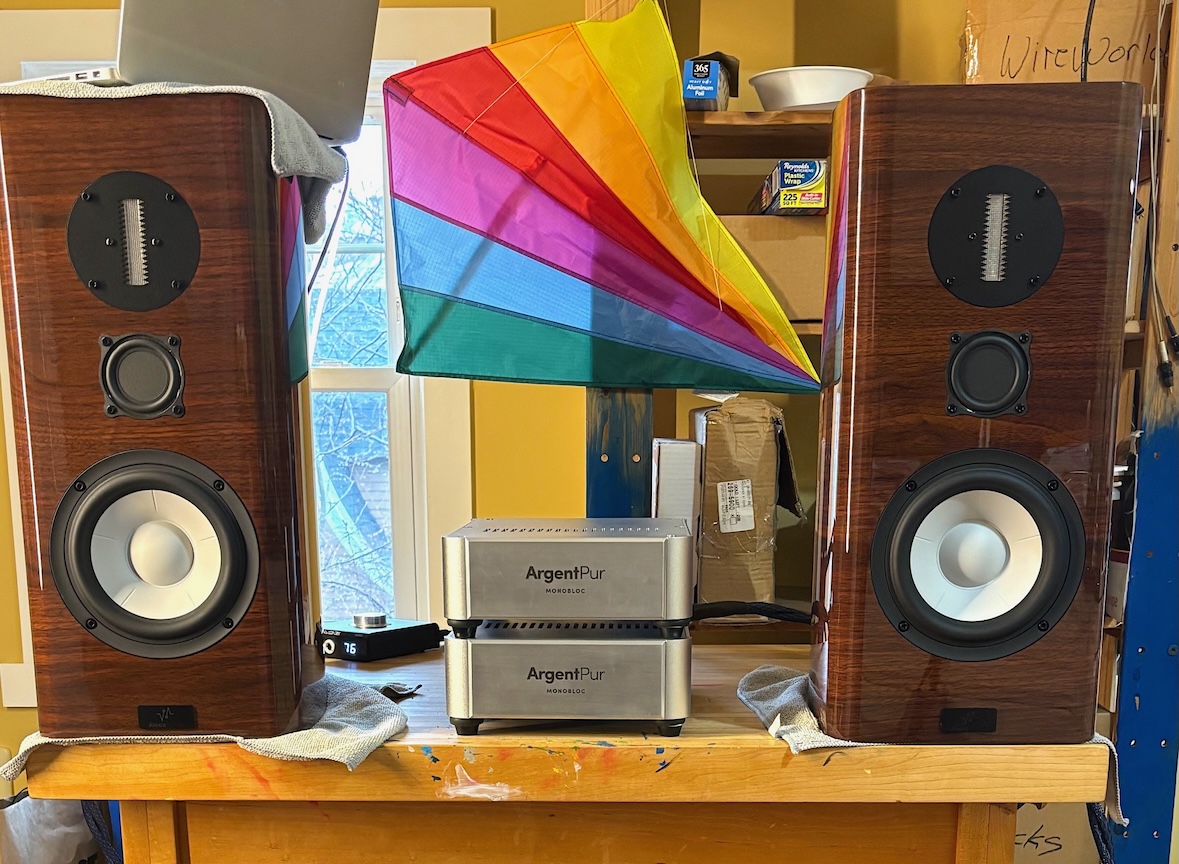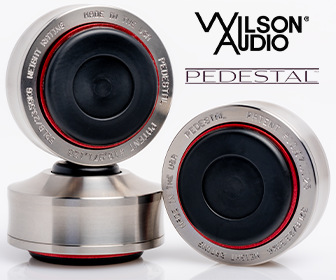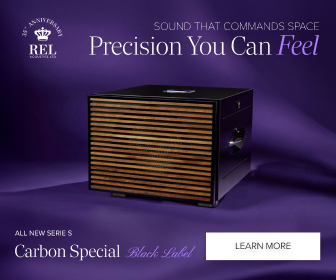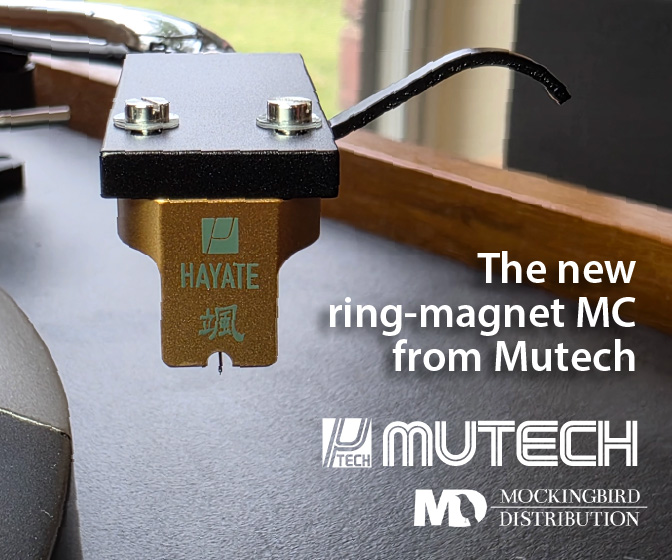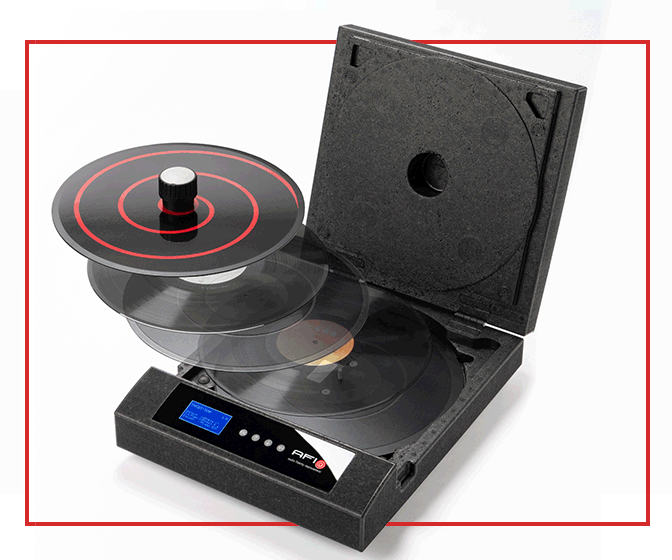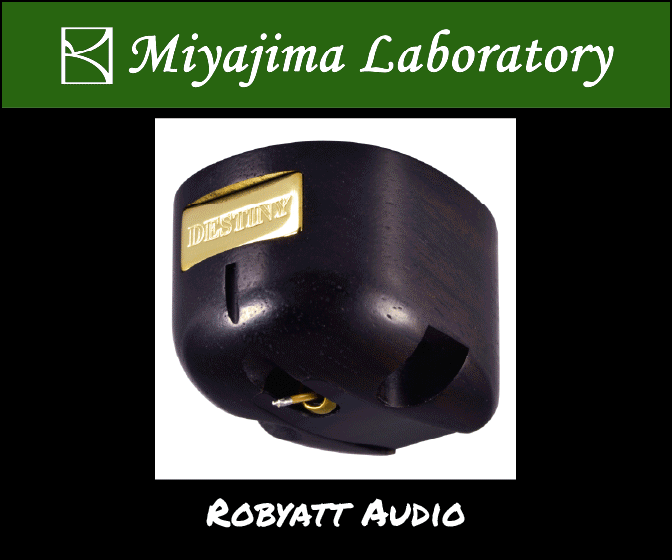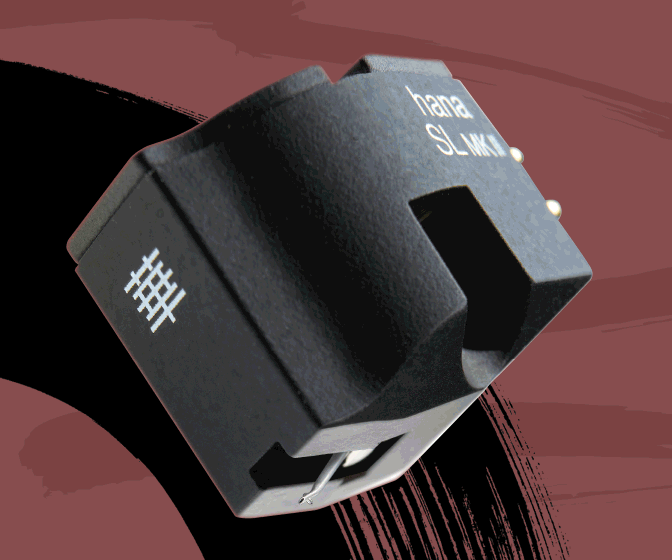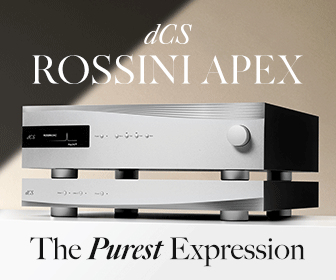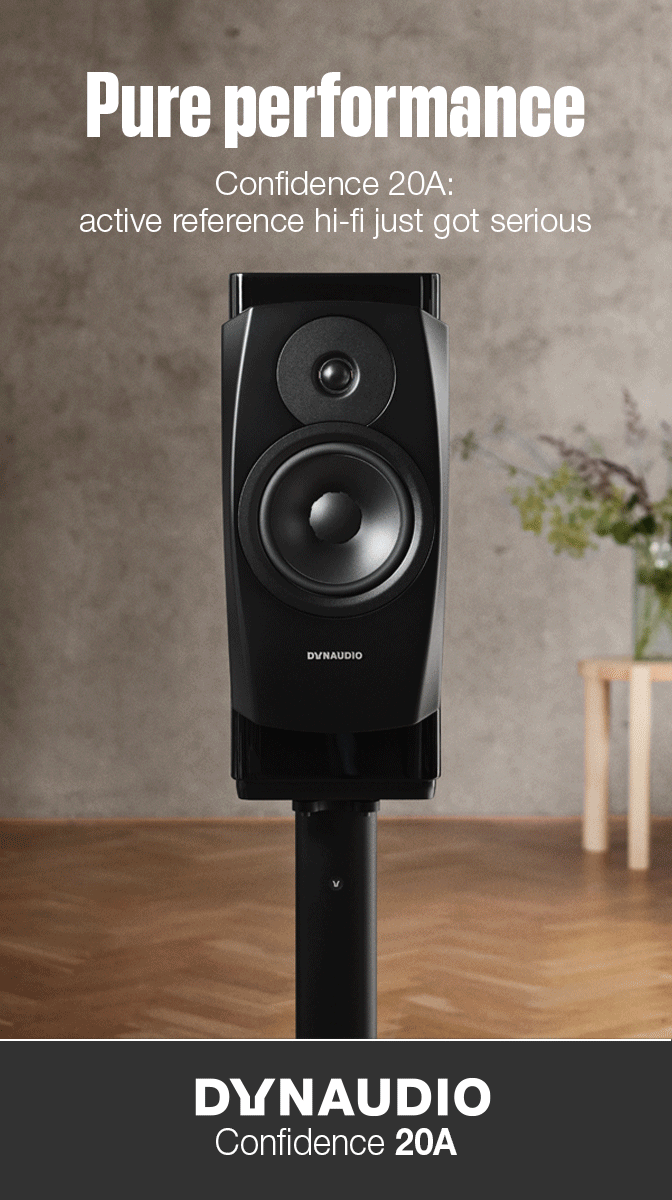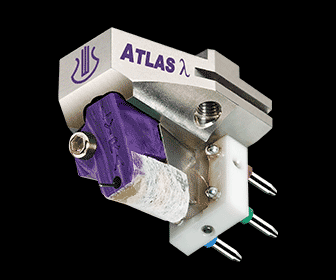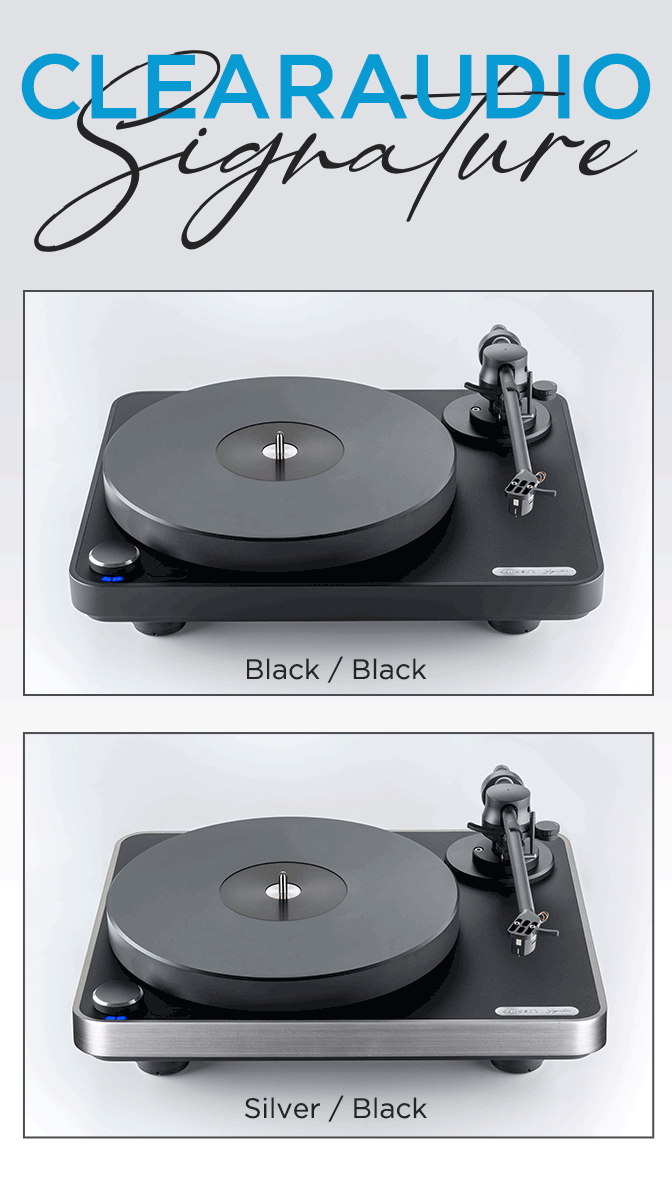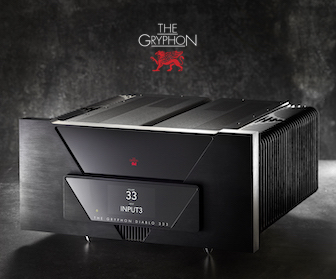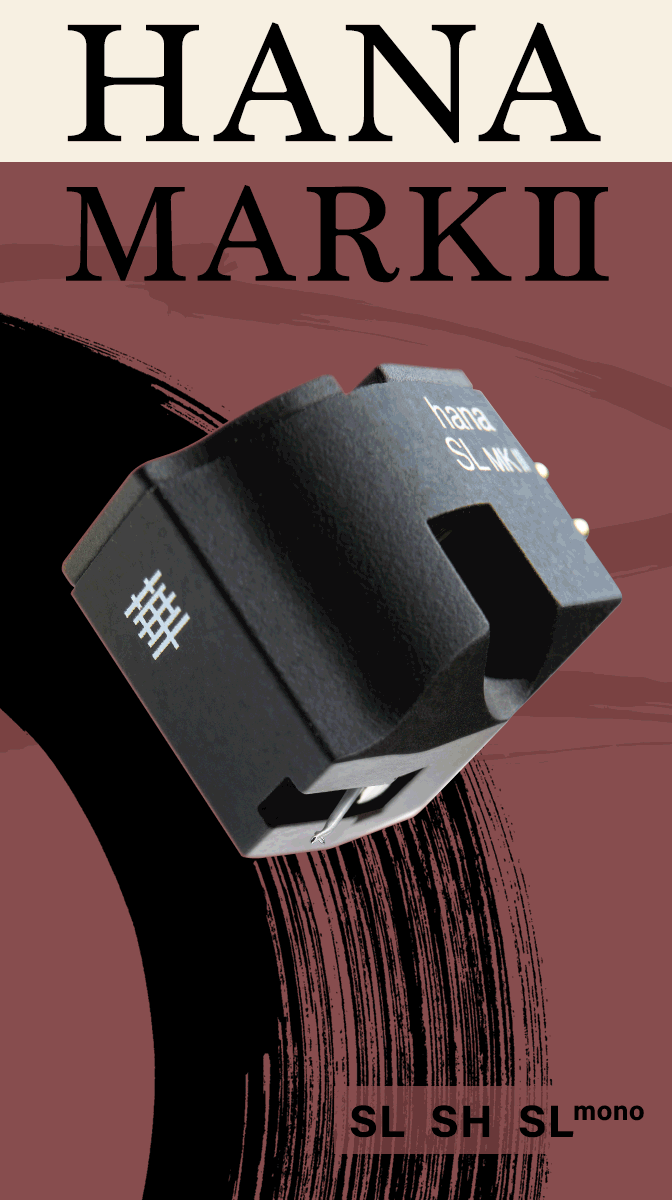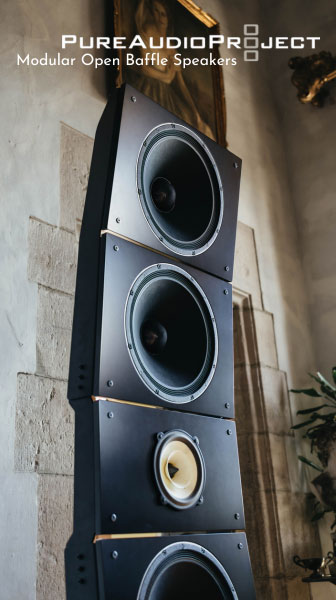Philharmonic Audio Balanced-Mode Radiator (BMR) Monitor Loudspeaker
The Loudspeaker Bargain of the Century—At least so far!
Philharmonic Audio’s Balanced-Mode Radiator (BMR) Monitor Loudspeaker (US Direct-to-Consumer $1800/pair and up, depending on finishes) makes me think of a conversation I had more than 25 years ago, at a national sales conference of (mostly) brick-and-mortar Record Retailers. (That conference took place, obviously, before the Tower Records Bankruptcy, and before Borders had their “The Night We Called It a Day” moment.)
During a break in the conference, a Classical-Records-Department manager came up to me. He told me that when he received his store-play CD copy of my JMR Bob Ludwig remastering of violinist Arturo Delmoni’s celebrated encore-piece, with-piano recital Songs My Mother Taught Me, he flipped it over, to glance at the track list.
He then sighed and said to himself, “I need another ‘Méditation from Thaïs’ in my store, like I need a hole in my head.” (The “Méditation” being a very frequently-recorded violin short piece.)
Nonetheless, the retailer put the CD in his department’s sound system. A few tracks later, he realized that he had been totally brought up short and captivated by… Arturo Delmoni’s “Méditation from Thaïs.” The retailer promptly ordered copies of Songs My Mother Taught Me to recommend and sell. I still treasure his forthrightness and his humility.
(Note: Recorded in 1982 and first released as a North Star Records LP in 1986, Songs My Mother Taught Me is now available in a numbered limited-edition 24-kt. Gold CD from IMPEX.)
I think that many of us, from time to time, are tempted to give in to the temptation to mutter, “I need another X, like I need a hole in my head.”
So, on the subject of heads, and not-needed holes:
Philharmonic Audio’s proprietor Dennis Murphy told me that, when he was preparing for the most recent Capital Audio Fest, he had hunted through nearly every iteration of Stereophile’s “Records to Die For” awards feature, looking for under-appreciated demo tracks.
Dennis is a critical listener (as well as being a working orchestral violinist and violist). His overall judgment was that, at least for his tastes, many of the R2D4 lists he scanned were “Pretty Slim Pickings.”
But Dennis also told me that he had “struck gold” with one of my recommendations, British singer-songwriter Julia Fordham’s Porcelain (1989). I can’t resist quoting my old self (with a few clarifications and embellishments).
One snappy response to "Cry Me a River" might be, "Did you have any particular river in mind?"
A very clever idea Julia Fordham had, to make a Cole-Porter–esque “List Song” ("For You Only For You") out of the names of the rivers the newly-resolute narrator now rues having ever cried: "The Ganges, the Clyde, the Amazon, the Nile / the Avon, the Trent; the tears that I spent!"
But the lyrics alone can only suggest Fordham's languid, breathless, hypersexual delivery. Nor give a clue as to the very impactful sound quality! Every time I've asked an audio-show exhibitor to play a track from Porcelain, people have scrambled to take notes. If you love Norah Jones or Dido, you'll love Porcelain. An undiscovered gem.
The relevance being that, in a different track on the Porcelain CD (“Did I Happen to Mention”), Fordham memorably sings:
I need, I need, another ‘Good Friend’ like I need, like I need, a hole in my head.
Being in the “Friendzone” obviously had little attraction for Miss Fordham.
I think that Porcelain is a very under-appreciated album, which is a shame. Miss Fordham wrote and arranged all the tracks, played guitar and sang lead and back-up vocals, and co-produced. One of her co-producers (and engineers) was Hugh Padgham. I think he’s a rather legendary chap. Padgham has worked with Phil Collins, David Bowie, Kate Bush, Genesis, Paul McCartney, the Police, and many others. Star session players on Porcelain include bassist Pino Palladino and oboe player Kate St. John.
To use one of my mentor Boris Goldovsky’s self-penned witticisms, “Porcelain has been unfairly neglected. Therefore, please glect it—as soon as you can.”
Back to the Loudspeakers!
If it ever had been the case that I was at all tempted to have a “The world needs a new, labor-of-love, micro-company ‘Different-Drummer’ loudspeaker, like it needs…” reaction, a quick listen to Philharmonic Audio’s BMR Monitor would have put an end to that thought.
But I was never even close to “The world needs… .” That’s because the BMR Monitor actually is the kind of loudspeaker I believe the world of audio really does need. And, you can pretty much tell that, just by looking.
First of all, while it is unquestionably still possible to build a “pretty good, basically unobjectionable” loudspeaker with affordable, conventional cone woofers and dome tweeters (e.g. Vera-Fi Audio’s “Vanguard Scout”), competition has driven the cost of conventional components down to the point one has to ask: To what extent is performance being sacrificed?
To pick a random example, SB Acoustics will gladly sell you a very nice TeXtreme TPCD (Thin-Ply Carbon Diaphragm) 7.5-in. woofer for $346/ea. Or, SB Acoustics can sell you one 8-in. paper-cone woofer for $51. And if you really want to economize, Parts Express will sell you a GRS paper-cone 8-in. woofer for $14.
From $14 to $346 is a Delta of nearly 25X.
Or, if your Trust Fund Officer has been very good to you this month, perhaps you can build your new loudspeaker project around Scanspeak’s new Ellipticor 7-in. woofer, at $917 each. As its name suggests, the Ellipticor’s Unique Selling Proposition is an elliptical voice coil, rather than the usual round one.
So: When I am checking out a loudspeaker that is new to me, the first thing I look for is high-quality drivers. And, preferably: High-tech high-quality drivers.
Things like Purifi woofers, with their distinctive “Neutral Surround” surrounds; or TPCD-cone woofers (which were introduced more than a decade ago, by Rockport); or Beyma’s wonderful Air Motion Transformer Tweeters; or RAAL’s ribbon tweeters; or… Tectonic’s Balanced-Mode Radiators.
The above does not mean that I will ignore a loudspeaker just because it has a fiber-pulp (or some other familiar material) woofer cone, and a silk-dome tweeter. There are companies I have been familiar with for so long that I am confident that whatever they put before the public is going to be worthwhile. To take one example, professional (active/powered) and consumer (passive) loudspeaker company ATC has, long before today, earned its excellent reputation.
“So, John: What is a Balanced-Mode Radiator?”
Excellent question. And I will get to that right after I fill you in about Philharmonic Audio.
Yes, you guessed it! The company name relates to the fact that the Big Cheese is a professional orchestral bowed-strings player.
The bottom-line info is that Philharmonic Audio does its own Research & Development, and that the loudspeakers are assembled from (mostly) foreign-sourced parts; and, after assembly, tested, in Philharmonic’s facility in Virginia.
(There are a couple of (I assume) Chinese ideogram characters on the BMR Monitor’s speaker-terminal escutcheon plate; which, to me, suggests that the cabinets were sourced from China.)
 One of the things that impressed me about Philharmonic Audio’s “story” is that they prioritize crossover design above any other factor. Here’s the relevant quote from their website:
One of the things that impressed me about Philharmonic Audio’s “story” is that they prioritize crossover design above any other factor. Here’s the relevant quote from their website:
We at Philharmonic Audio believe that the crossover network is the most critical element in loudspeaker design. Without a properly optimized crossover, the finest loudspeaker drivers mounted in the most expensive cabinet will sound mediocre or worse. Dennis Murphy has been designing crossovers for private clients and Salk Sound for over twenty years. An economist by profession and a violinist and violist by avocation, Dennis has been able to combine the statistical tools required in loudspeaker design with a first-hand knowledge of the sound of acoustic instruments to produce crossovers that have been consistently recognized as the most accurate available. He launched Philharmonic Audio in 2012 with the purpose of lowering the cost of owning loudspeakers that incorporate uncompromised crossover design and the finest driver technologies. The company is named for the Washington Metropolitan Philharmonic Orchestra, where he is a member of the viola section.
(Note, Salk Sound went out of business about a year ago, after a very impressive run.)
In 2020, Philharmonic Audio was re-launched as “Version 2.0” with the addition of Supply Chain expert Ken Lin. Another important name is that of Paul Kittinger, a cabinet expert who specializes in Transmission-Line designs.
So: About BMR drivers. To quote from driver manufacturer Tectonic Audio’s website:
Balanced-Mode Radiators (BMRs) are designed to provide wide-directivity output up to the highest frequencies from a single transducer, ensuring clear intelligibility throughout the room…. At low frequencies the diaphragm moves as a rigid piston, but at higher frequencies the diaphragm becomes modal (modes are standing wave vibration patterns). This carefully controlled modal behavior, superimposed with the underlying piston movement, ensures that the drive unit does not ‘beam’, maintaining wide directivity up to the highest frequencies.
Such drivers are sometimes referred to as Bending-Mode Radiators. The way I visualize it is, the lower frequencies elicit Pistonic Motion from the flat diaphragm, but above a critical frequency, the diaphragm moves air by “Cracking the Whip.” Tectonics has a White Paper, if you want to do a deep dive into the technology.
Five Things To Know About Philharmonic Audio’s BMR Monitor
1) The BMR Monitor is larger than you might expect. Way larger.
A “Shoebox Loudspeaker,” the BMR Monitor is not. And, the BMR Monitor is HEAVY (32 lbs./ea.).
Here’s a photo, with a vintage RCA “Soria Series” boxed set of 12-inch LPs, for comparison. My friend Tony de Almeida Santos, himself a gifted singer as well as classical-music record producer (he’s the son of conductor Antonio de Almeida) cites this 1959 Soria Series Sir Thomas Beecham/Royal Philharmonic Handel set as his all-time favorite Messiah. FYI.
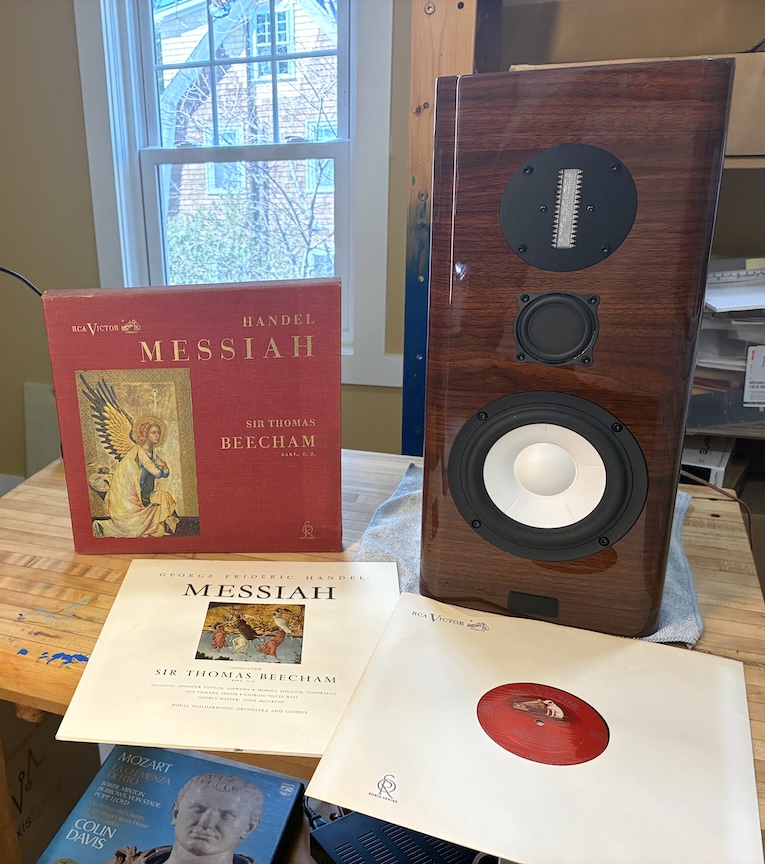
Acoustic Research’s AR-1 loudspeaker, the acoustic-suspension design that launched the “Bookshelf Loudspeaker” product category, was 25" H x 14" W x 11.5" D. The AR-1 was wider than it was deep, to fit into bookcases horizontally (or, if you prefer, in Landscape Orientation).
The BMR Monitor, at 20" H x 8" W x 12-1/2" D, is close to the AR-1’s bulk, but only when seen in side view, (because the BMR Monitor is half-again deeper than it is wide).
Therefore, the BMR Monitor is not a loudspeaker that will make sense for most “Desktop/Computer Loudspeaker” implementations. Perhaps on stands, in front of the front of the desk, might work for you.
The payoff for the BMR Monitor’s bulk and weight is one of the things that makes it a standout bargain in the very crowded $2,000/pair price tier:
A claimed Anechoic Frequency Response of 36Hz to 20kHz (+ / - 2db).
I find that claim entirely plausible, because, as part of my Break-In process, I would run the BMR Monitors closely aimed at each other, one in reverse phase, with an “enhanced” (added volume on the high treble) Pink Noise track, that also has an additional 32.7Hz sine-wave overlay.
I also ran the 32.7Hz sine wave alone; and also, at times, not in anti-phase. (The .7Hz is to bring the pitch into the Equal-Tempered musical scale that most keyboards use.) When the BMR Monitors were running the 32.7Hz sine wave, in phase, and nothing else, I had a listening experience that I had never had before.
Standing in front of the right loudspeaker, I heard a definite 32.7Hz tone. Perhaps its Sound Pressure Level was not within -2dB of the rest of the loudspeaker’s tonal compass; but, it was still impressive.
And, when I stood behind the right loudspeaker, I heard the attenuated-by-stuffing back waves of the woofer, making their way out of the port. It appears to be a high-quality, dual-flared port, with a center section two inches in diameter.
However, standing beside the middle of the loudspeaker and facing its side crosswise, so that my nose was equidistant from the front and rear panels (and therefore equidistant from woofer to port)… I heard… NOTHING. I’ve never heard that before.
Or rather, I’ve never “not heard” that before. Perfect cancellation!
Now, once I have heard it, perhaps I can reproduce it on other loudspeakers. In all things, as they used to say in China, “Truth will be the Daughter of Time.”
I think that one reason that particular psychoacoustical illusion works at all, is because the Refresh-Rate Time Interval of our ear-brain system is 10 milliseconds. That’s what the Haas-Effect Window is based upon: When two sounds arrive within an interval of less than 10ms, our ear-brain system hears them as one sound.
BTW, the photo at the top is not of my final setup, it is a picture of an early setup, but it’s the only picture I have with the ArgentPur amplifiers. The arrangement I settled on was to use the BMR Monitors’ shipping cartons in place of loudspeaker stands. That’s because my loudspeaker stands are sized for “shoebox” monitors, and I was very concerned that putting the BMRs on them would be unsafe. So, I sat at the apex of an equilateral triangle approximately six feet on a side, with zero toe-in, and the ribbon tweeters at about the height of my ears.
2) Break-In is Critical.
The BMR Monitor’s woofer is listed as “Ceramic.” In my experience, ceramic woofers can be remarkably quick and detailed. I have not used one yet in my own loudspeaker designs, because my design approach is to make the crossover’s job as easy as possible. Most of the ceramic drivers that I have examined the data on, have some pretty nasty peaks going on, above their passbands. Also, the BMR Monitor was my first experience with Balanced Mode Radiators.
All of which is to say that, fresh out of the box, the BMR Monitors sounded like they really needed breaking in; or, as a visiting friend said, “Green.” As noted above, I dealt with that.
3) The BMR Monitor certainly lives up to its “Monitor” appellation.
Therefore, the BMR Monitor does reveal the corners that are cut by “affordable” associated gear. But when you mate the BMR Monitors with truly “High End” gear, you can really hear the difference.
Going back to Julia Fordham’s album Porcelain, especially listening with high-end associated gear, I was hearing little things here and there that I had not previously noticed. However, that informational increment did not appear to be the result of thinning out the midrange, or boosting the treble.
Once broken in, and once connected to gear that admittedly was at least two price tiers above the “Better, but not the Best” gear the BMR Monitors are likely to be mated with, the overall impression I had of the BMR Monitors was that they were “designed” (or, “refined”) to a Fare-Thee-Well.
That impression is bolstered by the fact that the units I received were from a De-Facto (but largely unannounced) v. 2.0, or perhaps even v. 2.5. I say that because Philharmonic’s product page mentions “a second-order acoustic crossover that boosts sensitivity more than 2 dB over the previous BMR model.”
I think that the Freudian Word-Association response that the phrase “Monitor Loudspeaker” most often elicits is “Flat Frequency Response.” The BMR Monitor seems to have that base covered:
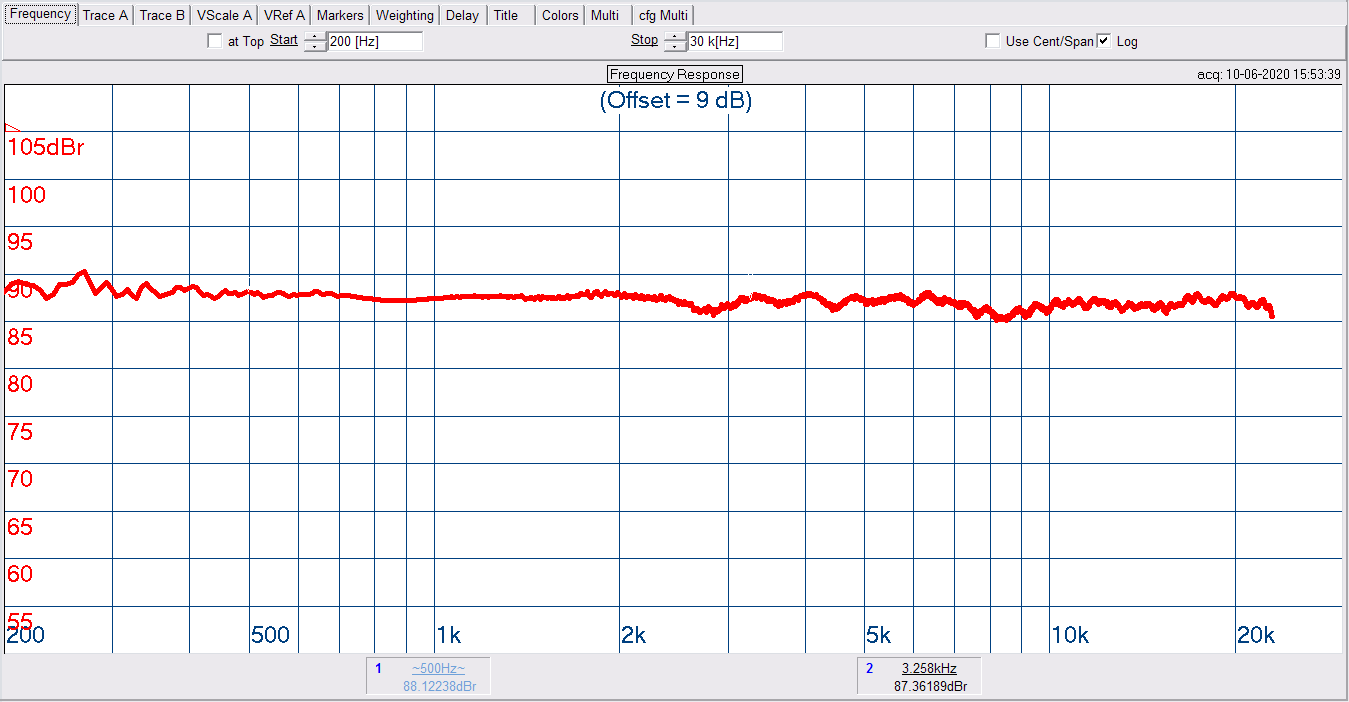 Notes:
Notes:
(i) This On-Axis, anechoic graph extends down only to 200Hz. That might be a result of the measurement method.
(ii) The BMR Monitor’s claimed Sensitivity is 86.5dB, which is in the middle ground—not high; but not so low that heroic amplification is called for.
4) With High-End amplification and cables, the BMR Monitor sounds more like a $4,000/pair loudspeaker than a $2,000/pair loudspeaker.
Ernie Meunier of ArgentPur Audio stopped by for a listen, bringing with him a pair of his new GaN-FET monoblock power amps ($5900 the pair).
My, what remarkable little amplifiers! I say that because their enclosures measure 8.5" x 12.5" x 3.5", which makes their footprint only one and a half inches longer than a piece of copy paper. In the same vein, they weigh 7 pounds each.
They don’t weigh much, but these are very serious amplifiers! Quoting from the website:
These compact amps offer 250w/8ohm (500w/4 ohm) power, using customized Orchard Audio Ultra balanced modules, powered by a custom 800w Surface Mount Power Supply with soft-start and ultra-high-frequency switching, for extremely low EMI, and very high efficiency.
All input, output and power-supply wiring consists of twisted-pair ArgentPur solid pure silver in Teflon air-tubes for peerless soundstage detail and holography... the ultimate transparency (without brightness!) that both Gallium Nitride and Pure Silver are renowned for.
Mundorf SGO (Silver-Gold-Oil) premium capacitors are also used in the critical signal path filter to provide even better resolution and soundstage realism compared to other GaN-FET and Class D designs. The musicality clearly equals best Class A but with utmost pellucidity to the source... plus the ultra-fast gut-wrenching bass grip Class D provides.
The “Elevator Pitch” for these amps is, as far as I can tell, “Start with a ‘Known Excellent’ New-Technology power-amplifier module, ‘Max Out’ its power supply, and then upgrade the capacitors, wiring, and connectors.”
I must admit I was almost giggling with delight at the sonic improvement effectuated by swapping out the workaday, “adequate for some purposes, but uninspiring” Parasound Zamp 3, and connecting the 16X more expensive ArgentPur Monoblocks (using thousands of dollars’ worth of ArgentPur silver power cords, interconnects, and speaker cables).
The midrange and treble were smoother; the drivers seemed even better integrated; the bass impact was such that it made me think that, with the right amplification (and only with the right amplification), the BMR Monitors might be all the loudspeaker some people might need, especially people with mid-sized or smaller rooms. Oh, a couple of other things: Musical detail was clearer; phantom images were even more phantom, and the noise floor seemed to be lower.
I strongly suggest that The Tracking Angle review either ArgentPur’s Monoblocks or the sibling Stereo version ($5300), as soon as possible!
5) The BMR Monitor is a loudspeaker with a “Personality.”
And, make no mistake: I think of that as a Good Thing.
Chris Huston is as soft-spoken and unassuming a chap as you would ever hope to meet. A real gentleman of the old school. Chris has an amazing backstory. He and John Lennon were close friends at Liverpool’s College of Art. Lennon and Huston later had “dueling bands” that played at Liverpool’s Cavern Club. Chris’ band was “The Undertakers.” The Undertakers played gigs in scrappy clubs near the Hamburg docks, too.
But Chris is not just an asterisk in the margins of the music encyclopedias. He co-engineered Led Zeppelin II; earned a Grammy nomination for producing The World is a Ghetto; and has produced or engineered more than 80 gold and platinum records.
I was discussing loudspeaker design with Chris, and he asked a philosophical question that brought me up short. Chris asked, “Should a loudspeaker have a ‘personality’?” I had never thought of things in quite those terms before. It took me a moment to collect my thoughts. I quickly ransacked my memory for audio “peak experiences.” I then answered, “Yes.”
Chris then came back with one of the most concise and insightful bits of audio wisdom I have ever heard: “A loudspeaker without a personality is like a song without a hook.” Ah-ha!
Chris’ nugget of wisdom is as counter-intuitive, as it is bound to be controversial. Shouldn’t we want loudspeakers to be “neutral”? Shouldn’t a loudspeaker be the acoustical equivalent of “a straight wire with gain”? In theory: Yes.
But in practice, the laws of physics seem to dictate that in designing a loudspeaker, to get this, you have to give up that. Every loudspeaker design is a “Compromise,” even if the only thing that you compromise on is Affordability.
You want a loudspeaker with bass response down to 20 Hz in-room, and with 116dB-SPL capability? Sure, we can do that; but you then have to give up the immediacy and coherence of single-driver designs, and of most panel or planar loudspeakers. And so on. “You squeeze it here, it bulges there.” Pick your poison.
By the way, I probably should not assume that everyone knows what Chris meant by a “hook.” In popular music, the hook is that brief combination of words and music that makes a song catchy. The hook is what makes a song stick in your memory—sometimes, against your will.
The most hook-laden rock song I can think is The Doobie Brothers’ “Listen to the Music.” The hook “Oh-oh-oh, listen to the music” goes by, at least 24 times. Critic Robert Christgau put “Listen to the Music” on his 10-Worst List of 1972, calling the song “Doobieous,” while dismissing the band as “Corporate Rock.” Eh.
The Ronettes’ “Be My Baby” has a title/chorus hook that gets repeated over a rather “churchy” chord progression (perhaps subliminally suggesting a church wedding).
The Ronettes, incidentally, were the only female group ever invited to tour with The Beatles. “Be My Baby” was Cher’s first commercial recording credit—as a backup singer. Smitten Ronettes fan Brian Wilson thought “Be My Baby” was the greatest song ever written; he wrote The Beach Boys’ “Don’t Worry, Baby,” as a tribute. Ah, the awesome power of the hook!
How would I describe the BMR Monitor’s “Personality”? How about “This loudspeaker sounds like it was designed by an orchestral string player who knows enough engineering to achieve his goals with admirable economic efficiency.”
The BMR Monitor is especially remarkable for its timbral and temporal coherence, midrange and treble articulation and detail, and its extraordinary soundstaging and imaging.
I was listening to the hi-res remastering of Van Morrison’s Astral Weeks, which is definitely on my Qobuz Favorites list. I have never heard it with such arrestingly holographic imaging. The last time I reviewed a loudspeaker that had as convincing a “Phantom Center Image,” that loudspeaker cost $14,000/pr.
Putting the BMR Monitor in Context
Philharmonic Audio’s stand-mounted BMR Monitor is Philharmonic’s most-affordable offering that uses a BMR driver as its midrange.
Philharmonic has two smaller, two-way offerings, the “True Mini Monitor,” from $380/pair; and the “Ceramic Mini Monitor,” from $850/pair. The True Mini has conventional cones and domes; but, and perhaps you have already guessed it, the Ceramic Mini has a ceramic woofer (at 5 inches, one inch smaller than the similar woofer in the BMR Monitor). As well as a ceramic tweeter.
Moving up in price tiers above the BMR Monitor, Philharmonic’s line consists of a Tower version with two BMR midranges, positioned in an MTM array above and below the ribbon tweeter, and also with a larger woofer; a Home-Theater Tower (which, instead of one Scan-Speak Revelator woofer per tower, has two Purifi woofers per tower); there is also a Center Channel loudspeaker. A total of six different models, three of which use Balanced Mode Radiators.
The BMR Monitor has dimensions of 20" H x 8" W x 12-1/2" D, and weighs 32 pounds. It is available in a Curved cabinet, meaning that its footprint is somewhat in the shape of a lute’s body or the prow of a small boat, which is a design touch often associated with Wilson Benesch and Sonus faber, among others. But the BMR Monitor is also available in a conventional rectangular cabinet. The acoustics are stated to be identical. Available finishes are Piano High Gloss Black and Satin Walnut for the Rectangular cabinets, and High Gloss Ebony and Rosewood for the Curved cabinets.
The BMR Monitor’s driver complement is: a RAAL OEM Ribbon Tweeter (sourced from Serbia); a 2.5-inch Balanced-Mode Radiator Midrange, and a 6.0-inch Ceramic Woofer. The enclosure is Vented, Ported, or Bass-Reflex—take your pick! (The port exits via the rear panel.) Philharmonic Audio claims a Frequency Response 36 Hz - 20kHz (+ / - 2db) Anechoic, with a Sensitivity of 86.5dB (2.83v/1M). Crossover points are not specified. Nominal Impedance is 4 Ohms.
The design brief of the BMR Monitor was that it should be:
• an affordable 3-way monitor
• with deep bass response, and
• wide frontal horizontal dispersion.
The frontal dispersion end of things is taken care of by the RAAL ribbon tweeter, which, being a ribbon, and being implemented in the usual vertical orientation, has a dispersion pattern that prioritizes horizontal over vertical dispersion. Philharmonic Audio claims that the BMR midrange matches the wide dispersion of the ribbon tweeter.
There is a page of measurements on Philharmonic Audio’s website. Please note that the link to Measurements on the BMR Monitor’s product page is a link to all the measurements, not to just the BMR Monitor’s measurements. So, if you do not scroll down, you will be looking at the measurements of the True Mini Monitor.
More Listening
I took note of the fact that, at an audio show a couple of years back, Philharmonic Audio (commendably) did the real-world thing and partnered its affordable BMR Monitor loudspeakers with the kind of equipment that those speakers will often find themselves being driven by, in the real world.
Specifically, a Topping D-90 DAC (MSRP $899) and monoblock Hypex NC-1200-based amplifiers (builder not specified; the VTV version is circa $2000 the pair).
Keeping with that idea, I first partnered my review pair of BMR Monitors with my exceptional Grace Design HPA/Pre/DAC (MSRP $660), and a workhorse Parasound Zamp3 Class A/B (all-analog) solid-state stereo amplifier (MSRP $349). And, admittedly, a Dog’s Breakfast of Very Affordable Cables.
As my custom for many years, the first tracks I listened to were John Atkinson’s electric-bass Channel ID and Phasing Tracks from Stereophile’s Test CD 2 or Editor’s Choice CDs, followed by Ella Fitzgerald’s “Easy to Love” from The Cole Porter Songbook, Volume Two.
On the Channel ID track, first of all, there was no added “chest resonance” on the narrator’s spoken-word voice—that does happen, you know. The timbral balance of the electric bass slightly favored the harmonics over the fundamentals, especially when compared to larger, full-range speakers. I think that that is to be expected, when a loudspeaker is trying to reproduce Low E = 41.2Hz (which has a wavelength of about 27 feet), using a 6-inch woofer.
On the Phasing track, the difference between "in" and "out" of (relative) phase was as distinct as I have ever heard.
On “Easy to Love,” the one word that sums up the BMR Monitor’s portrayal of Miss Fitzgerald in Glorious 1956 Mono is “Wonderful.” The timbral balance favored Barney Kessel’s softly-strummed rhythm guitar slightly more than usual. But I did not find that objectionable in the least—I think that that is just a part of the BMR Monitor’s “personality.” I have mentioned this many times; there’s a moment during “Easy to Love” when Miss Fitzgerald turns off-mic and quietly swallows. For more than 40 years I have used that as a metric of a loudspeaker’s resolving power. The BMR Monitor's presentation of that frozen in time moment was very detailed.
Next up (and you are shocked—Shocked!) was Julia Fordham’s “Lock and Key” from the Porcelain CD. The presentation was powerful, coherent, and holographic. The clarity of the music and voices that are being faded out at the end was remarkable. But again, with the proviso that if you spend a lot more money for loudspeakers, and if you get your money's worth, the bass will be more impactful.
I enjoyed the “Lock and Key” track so much (Miss Fordham’s contralto voice is enchanting) that I let it play through to the title track “Porcelain.” Toward the end, the percussion effects went beyond “holographic” to “floating in air.”
Other test tracks of note were the Cowboy Junkies’ “To Love Is to Bury,” and of course, Jennifer Warnes’ Famous Blue Raincoat title track. “To Love Is to Bury” had me blinking back tears. I adjudged the midrange on “Famous Blue Raincoat” to be as good as I have ever heard.
Summing Up
Obviously, I am very impressed. But that may or may not translate into a state of affairs wherein buying a pair of BMR Monitors should necessarily be your next audio-equipment move.
The same factors that make the BMR Monitors such an exceptional bargain also mean that you can’t just hop into your car and drive to a stereo store to give them a listen. They are made by a small company that only sells direct. Buying a pair and then finding that for one reason or another they are not your Cup of Tea will entail a certain amount of re-boxing and arranging for pickup.
Because of recent changes of circumstance, my listening room now is smaller than previously, and in any event I don’t usually listen very loud. Pretty much the only factors I can imagine might cause someone to send the BMR Monitors back would be:
(i) incompatible associated equipment or room acoustics;
(ii) a listener who has a large listening room; and/or
(iii) who also wants to hear all the bass there possibly is.
Of course, in each of these scenarios, the fix is fairly obvious. If the problem really is that the BMR Monitors are “cluing you in” on some deficit in your gear or your listening room, then the thing to do is to fix those problems, rather than take it out on the BMR Monitors. (That’s also called Shooting the Messenger.)
Or, if your room’s size and your bass-volume preferences are beyond the grasp of the BMR Monitor’s 6.0-inch woofers, you can either get a nice pair of very musical subwoofers, or resign yourself to shopping two or more tiers upward in loudspeaker prices.
For what they are: Highest Recommendation.
John Marks is a multidisciplinary generalist and a lifelong audio hobbyist. He was educated at Brown University and Vanderbilt Law School. He has worked as a music educator, recording engineer, classical-music record producer and label executive, and as a music and audio-equipment journalist. He was a columnist for The Absolute Sound, and also for Stereophile magazine. His consulting clients have included Grace Design, the University of the South (Sewanee, TN), Steinway & Sons, and the Estate of Jascha Heifetz.
Specifications
BMR Monitor: 20" x 8" x 12-1/2" (H x W x D).
Circa 32 pounds each
4 Ohms nominal Impedance
Frequency Response 36 Hz - 20kHz (+ / - 2db) Anechoic
Sensitivity 86.5 dB (2.83v/1M)
84.5dB Efficiency


